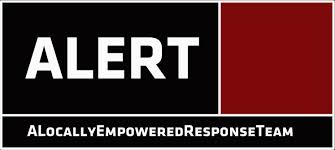Government Grants
Business Grants
Home Owner Programs
Federal Programs
About Us
Installation and Development of Methods and Analyses for PIT Tag Antennas
The Colorado River Basin historically provided habitat for all four endangered species; Colorado Pikeminnow, Razorback Sucker, Roundtail Chub, and the Bonytail.
Accurate fish counts are an important aspect of the program’s responsibility in the recovery of endangered fish species.
Beginning in the 1990’s the programs throughout the Colorado River Basin have relied on PIT-tagging (Passive Integrated Transponder) as a way to individually mark fish and allow researchers to track fish over a period of time, eventually providing population estimates.
These population estimates are critical to determining the effects of management actions and ultimately lead to decisions on whether the fish can be recovered and/or delisted.
Accurately detecting fish moving through rivers and streams is difficult and costly.
Existing passive systems are primarily effective for species with predictable movement patterns that can be funneled past stationary antennas.
Some systems exist for detecting fish in smaller tributaries or creeks, but these systems are limited in their ability to read fish in a larger river system.
Endangered fish in the Colorado River Basin are tagged prior to stocking, or are captured using electrofishing or traps and tagged with PIT tags to allow researchers to track their movements and assess survival.
Efforts to collect data on subsequent recaptures of the tagged fish involve large amounts of personnel and equipment since the fish must be physically recaptured to scan the PIT tags.
Recapturing can lead to mortality or changes in behavior and movements and thus bias the data and place the endangered fish at risk.
Remote and unmanned detection systems are needed to detect these fish without capturing to reduce both cost and injuries to the fish.
In an effort to develop mobile and remote-detection systems, Reclamation and Utah State University researchers have collaborated on the development of several systems to detect fish as they pass through or under various antenna arrays.
These systems were developed under a previous Cooperative Agreement through the Cooperative Ecosystems Studies Unit (CESU) agreement.
These systems consist of antenna modules, a master controller to operate the antennas, various power supplies (solar and conventional 110volt AC), integrated Global Positioning System (GPS) equipment and software for mobile systems; and data recorders to record tag numbers, dates, times, and locations of tags in the various rivers.
Some of the systems can be mounted to various watercrafts (e.g., rafts) and floated down a river.
Accurate fish counts are an important aspect of the program’s responsibility in the recovery of endangered fish species.
Beginning in the 1990’s the programs throughout the Colorado River Basin have relied on PIT-tagging (Passive Integrated Transponder) as a way to individually mark fish and allow researchers to track fish over a period of time, eventually providing population estimates.
These population estimates are critical to determining the effects of management actions and ultimately lead to decisions on whether the fish can be recovered and/or delisted.
Accurately detecting fish moving through rivers and streams is difficult and costly.
Existing passive systems are primarily effective for species with predictable movement patterns that can be funneled past stationary antennas.
Some systems exist for detecting fish in smaller tributaries or creeks, but these systems are limited in their ability to read fish in a larger river system.
Endangered fish in the Colorado River Basin are tagged prior to stocking, or are captured using electrofishing or traps and tagged with PIT tags to allow researchers to track their movements and assess survival.
Efforts to collect data on subsequent recaptures of the tagged fish involve large amounts of personnel and equipment since the fish must be physically recaptured to scan the PIT tags.
Recapturing can lead to mortality or changes in behavior and movements and thus bias the data and place the endangered fish at risk.
Remote and unmanned detection systems are needed to detect these fish without capturing to reduce both cost and injuries to the fish.
In an effort to develop mobile and remote-detection systems, Reclamation and Utah State University researchers have collaborated on the development of several systems to detect fish as they pass through or under various antenna arrays.
These systems were developed under a previous Cooperative Agreement through the Cooperative Ecosystems Studies Unit (CESU) agreement.
These systems consist of antenna modules, a master controller to operate the antennas, various power supplies (solar and conventional 110volt AC), integrated Global Positioning System (GPS) equipment and software for mobile systems; and data recorders to record tag numbers, dates, times, and locations of tags in the various rivers.
Some of the systems can be mounted to various watercrafts (e.g., rafts) and floated down a river.
Related Programs
Upper Colorado and San Juan River Basins Endangered Fish Recovery Programs
Department of the InteriorRelevant Nonprofit Program Categories
Obtain Full Opportunity Text:
Not Available
Additional Information of Eligibility:
Federal, Interstate, Intrastate, State and Local governments; Public Institution/Organizations, and Federally Recognized Indian Tribal Governments and private contractors.
Full Opportunity Web Address:
Contact:
Deborah ChorltonGrants Management SpecialistPhone 801-524-3734
Agency Email Description:
Work
Agency Email:
dchorlton@usbr.gov
Date Posted:
2015-07-31
Application Due Date:
2015-08-14
Archive Date:
2015-09-13
Social Entrepreneurship
Spotlight
Finding a Place in Mainstream Social Enterprise

Nell Derick Debevoise, Founder and CEO of Inspiring Capita, shares what she thinks are the three main ingredients in finding your place in social enterprise.

